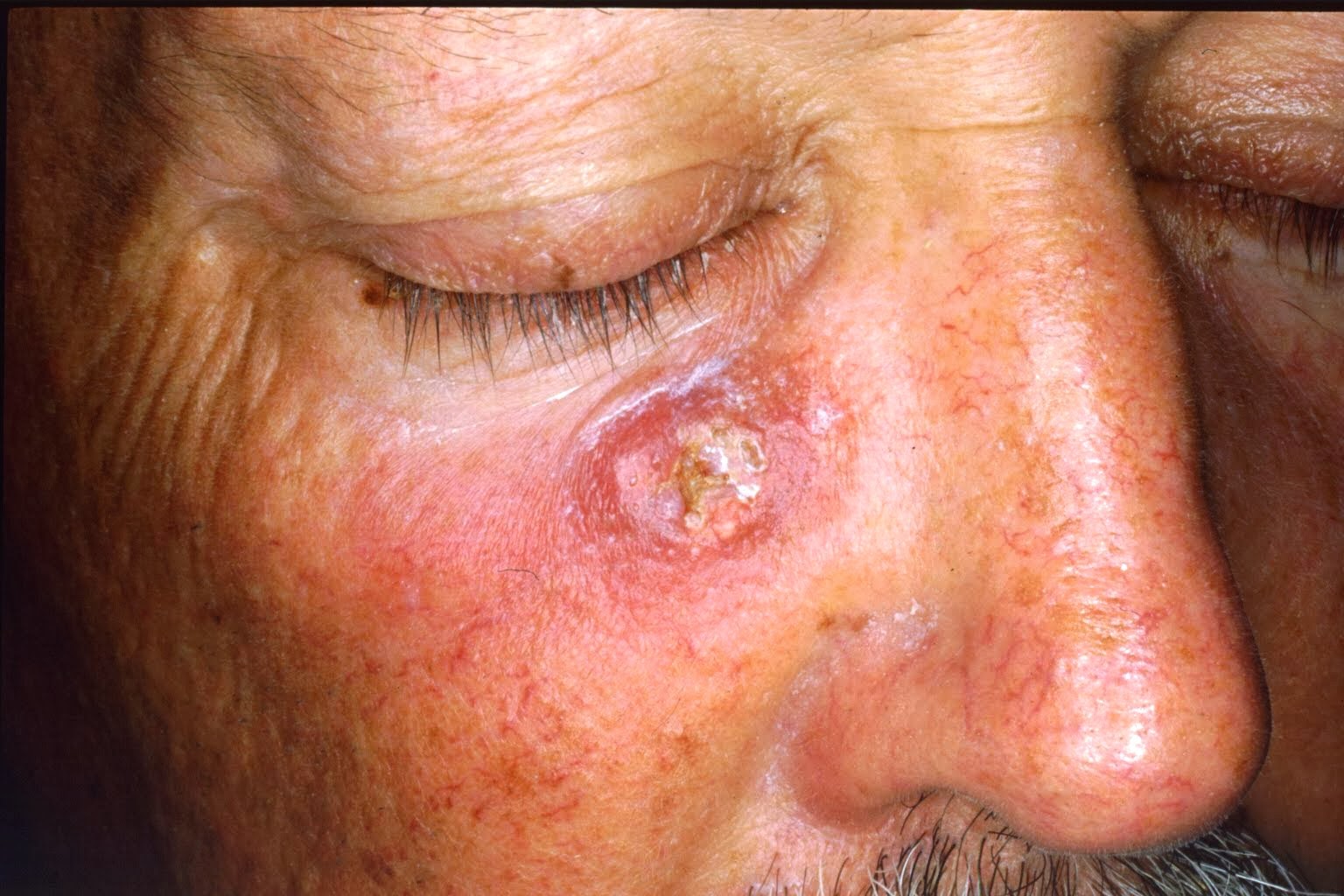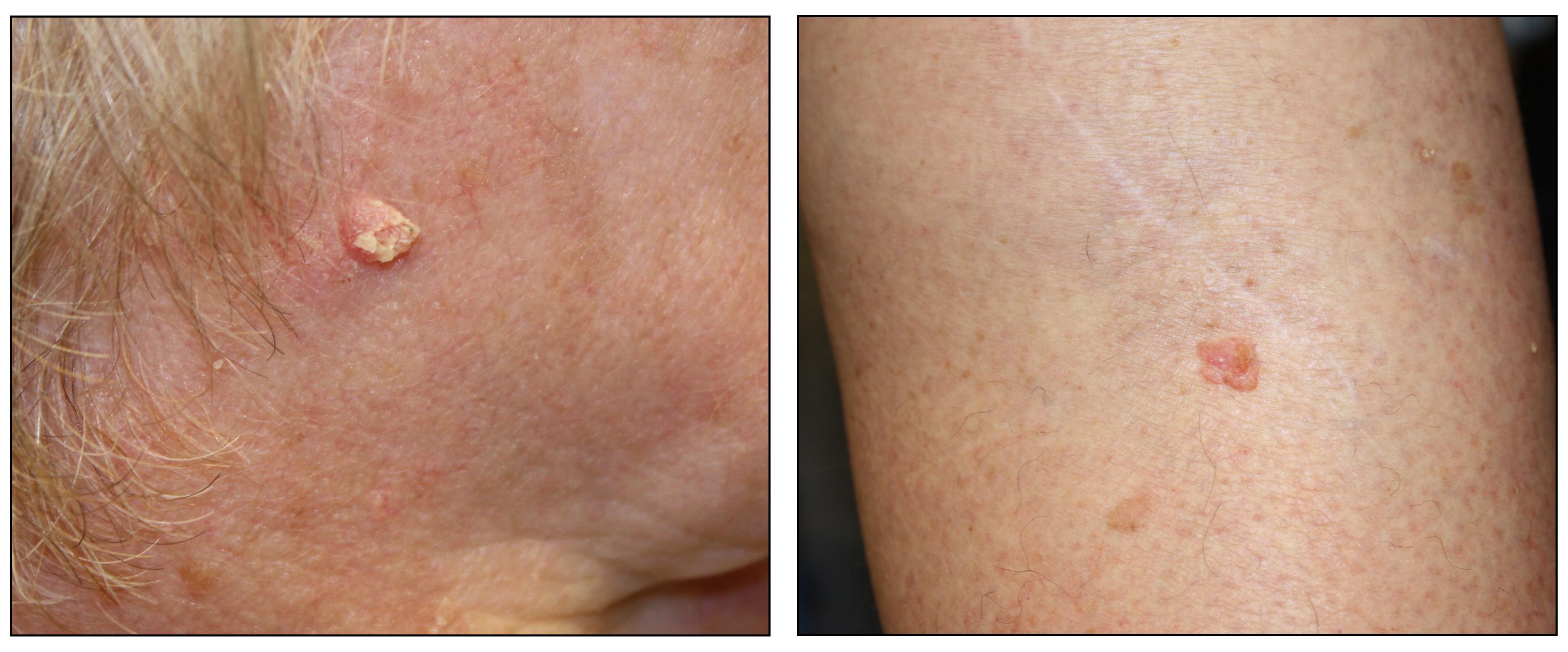Skin Cancer Symptoms - They are due to the development of abnormal cells that have the ability to invade or spread to other parts of the body. There are three main types: basal-cell skin cancer(BCC), squamous-cell skin cancer (SCC) and melanoma. Squamous-cell canceris more likely to spread. Skin cancer most often develops on areas of the body that get the greatest exposure to the sun’s ultraviolet (UV) rays. This skin disease usually strikes the face, chest, arms, and hands.
Less common locations that it’s found include:
- scalp
- ears
- lips
- neck
- beneath your fingernails
- bottom of your feet
- genitals
Types of Skin Cancer
While skin cancers most often appear as a suspicious mole, freckle, or spot, the particulars depend on the type of skin cancer. The most common types are explained below.

Actinic Keratosis
Actinic keratosis appears as a scaly or crusty lesion. It may appear on the:
- scalp
- face
- ears
- lips
- back of hands
- forearms
- shoulders
- neck
These areas are most frequently exposed to the sun. They are sometimes so small that they are found by touch and not by sight. They may feel like a small patch of sandpaper on your skin.
Basal Cell Carcinoma
Basal cell carcinoma often appears as a waxy bump. This also usually appear on the areas of the body most exposed to the sun’s rays.
Squamous Cell Carcinoma
Squamous cell carcinomas most commonly occur on the more sun-exposed body parts, but can also appear on the inside of the mouth or the genitals. The tumors caused by squamous cell carcinoma can take a variety of forms, including:
- a firm, red nodule
- a flat lesion with a scaly crust
- an ulcer in the mouth
- a red, raised patch on the anus or genitals
Squamous cell carcinoma is also known to cause intense itching, which only further irritates and inflames the skin. Scratching the skin can lead to infections that need to be treated with antibiotics.
Melanoma
Melanoma is the deadliest form of skin cancer. It most often develops on the legs in women and on the chest, back, head, and neck in men.
Common Symptoms of Melanoma
Here are some characteristics that may indicate that a mole, freckle, or spot is a sign of melanoma.
Asymmetrical/Irregular Borders
If the edges of a mole or freckle are irregular rather than fairly even all around, it could signal a cancerous change.
Change in Color
Color variation within a mole or freckle can be another telltale sign. Keep an eye out for these changes in color or appearance:
- different shades of tan, brown, or black, or in some cases, red, white, or blue
- a large brown spot with dark speckles inside
Although less common, other potentially cancerous lesions are dark lesions found on the palms, soles of feet, fingertips, or toes, or on the mucous membranes of the mouth, nose, genitals, or anus.
Diameter
A mole or freckle that’s larger than 6 millimeters (about the diameter of a pencil eraser) may be a sign of skin cancer.
Lack of Healing
If you have a sore or growth that doesn’t heal or bleeds, have your doctor check it out right away.
Signs of Less Common Skin Cancers
Although uncommon, it’s helpful to recognize the symptoms of these more rare skin cancers:
- Kaposi sarcoma develops in the blood vessels of the skin and appears as reddish-purple patches on parts of skin that are heavily sun-exposed.
- Merkel cell carcinoma leads to the growth of firm, shiny nodules on sun-exposed skin and in hair follicles.
- Sebaceous gland carcinoma is an aggressive cancer that results in hard, painless skin nodes, most often on the eyelids.








